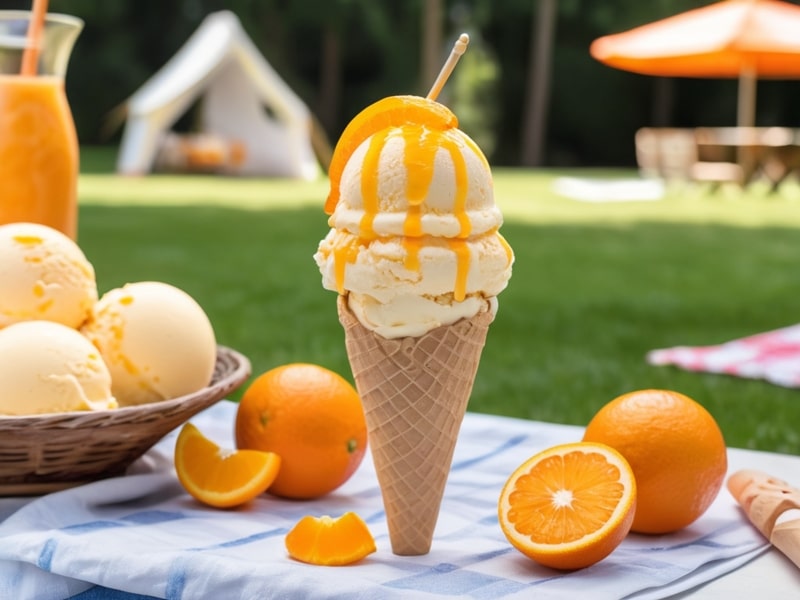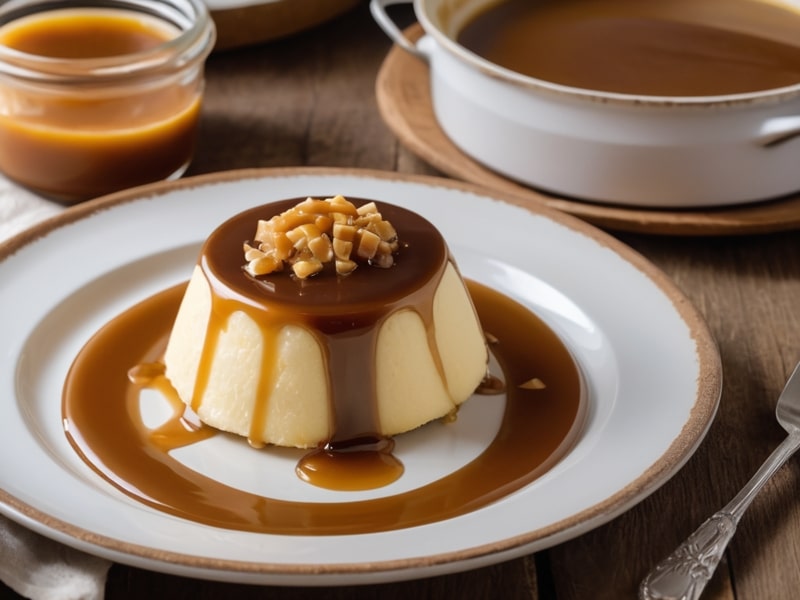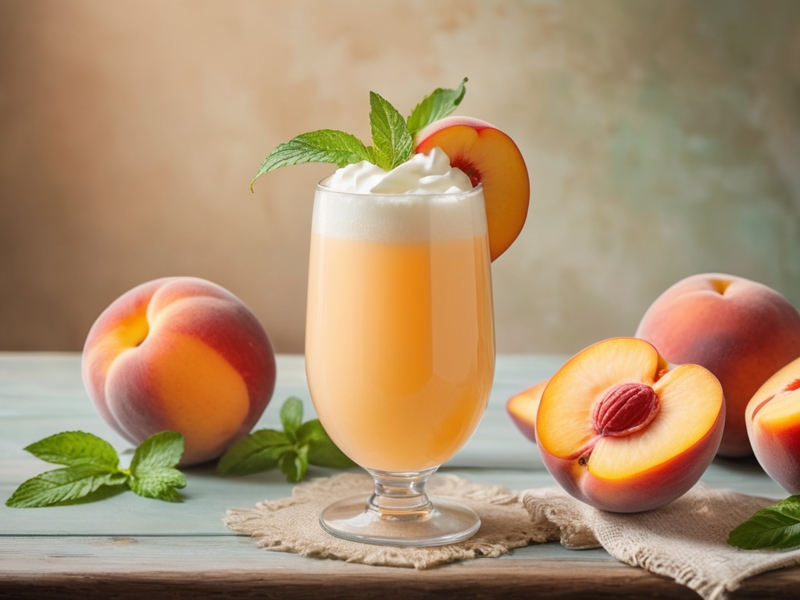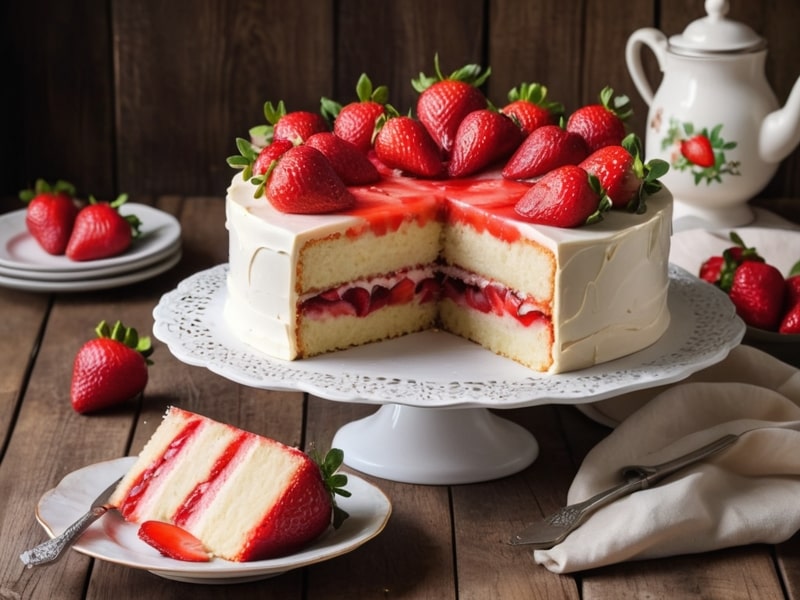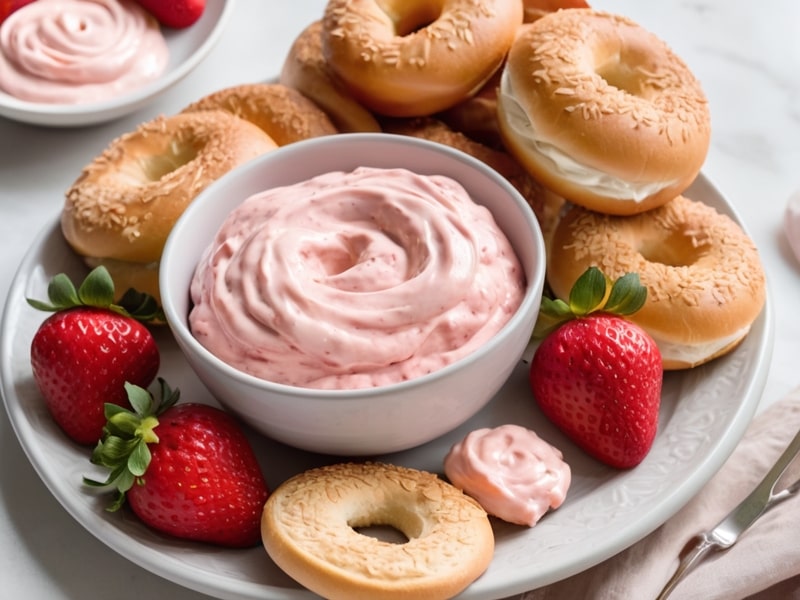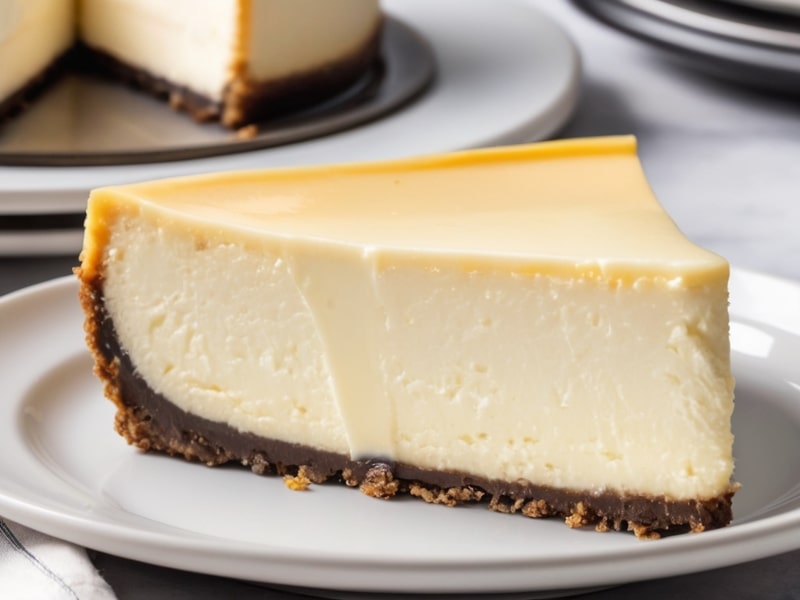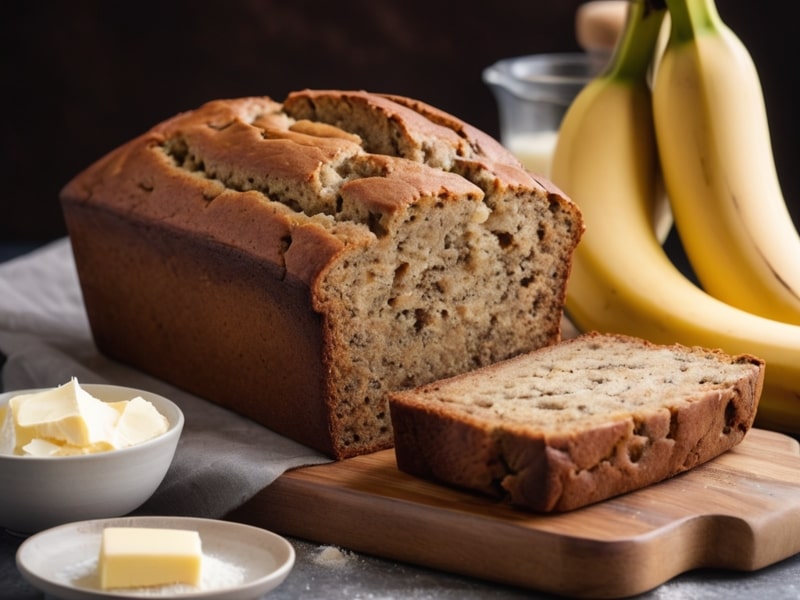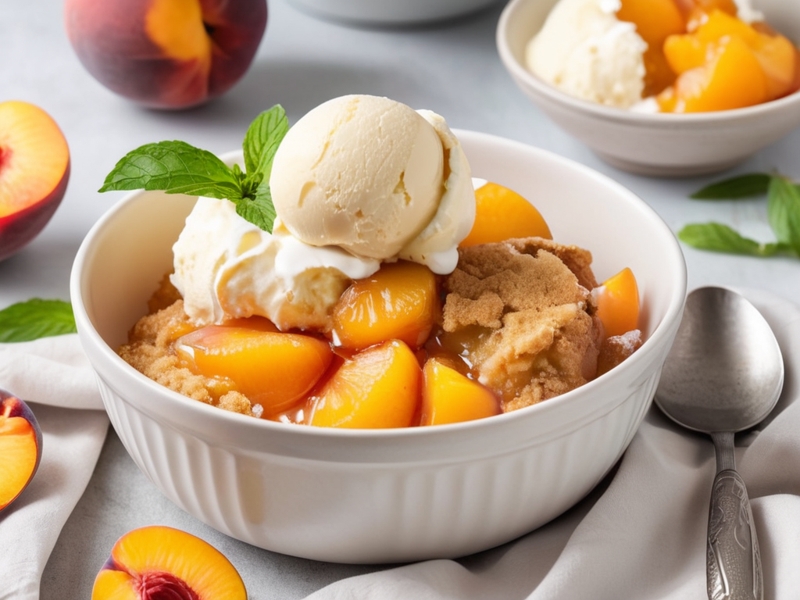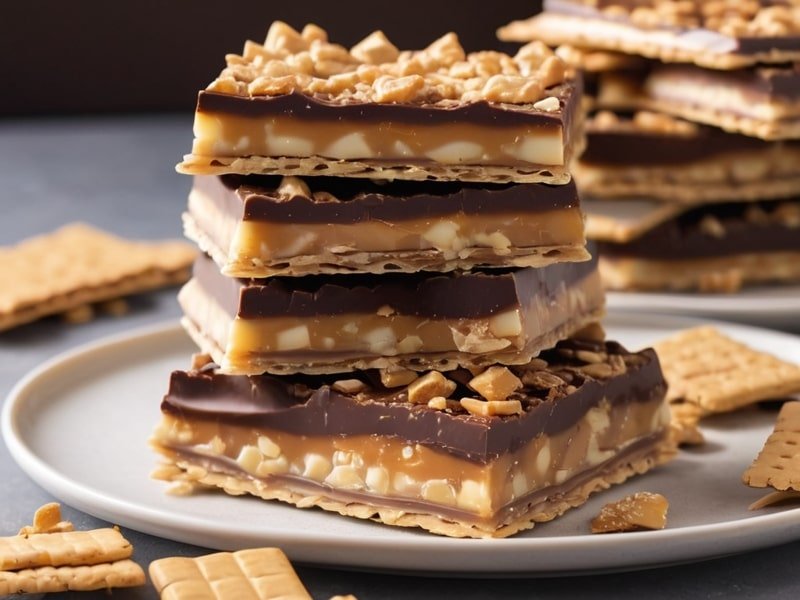Last updated on November 14th, 2024 at 06:33 am
Springerle cookies are a beloved part of German holiday traditions, known for their distinctive embossed designs and delicate anise flavor. These intricately molded cookies have been enjoyed for centuries, often passed down through generations as a treasured family recipe. Whether you’re a seasoned baker or trying them for the first time, this guide will walk you through everything you need to know about making perfect Springerle cookies. From selecting the right springerle mold to mastering the drying process, let’s explore the art of baking these beautiful and festive treats.
For more inspiration and to discover other delicious holiday recipes, check out our collection of festive treats on our website.
The History of German Springerle Cookies
Springerle cookies have a rich history dating back to the 14th century in the Swabian region of Germany. Originally, these cookies were used as ceremonial treats, adorned with religious motifs, and crafted for special occasions such as Christmas, weddings, and baptisms. The name “Springerle” is derived from the German word “spring,” meaning to jump or leap, possibly referring to the way the dough rises or “jumps” during baking.
Traditionally, Springerle was made using wooden molds carved with intricate designs, often depicting scenes from the Bible, folklore, or nature. Today, these cookies remain a staple in German households during the holiday season, representing a timeless connection to cultural heritage and family traditions.
The Cultural Significance of German Springerle Cookies
Springerle cookies are more than just a sweet treat; they are a symbol of German cultural heritage and tradition. These cookies are often made during the Christmas season when families come together to bake, share stories, and celebrate their customs. The process of making Springerle, from choosing the right mold to carefully imprinting the dough, is a cherished tradition passed down through generations. It’s not just about baking—it’s about connecting with history and preserving a piece of one’s ancestry.
The unique designs on Springerle molds often carry symbolic meanings. For example, floral patterns may symbolize love and beauty, while animals like birds or horses can represent peace and strength. Some molds depict religious scenes, reflecting the cookies’ origins as celebratory and ritualistic treats. By creating these cookies, bakers are not only crafting delicious confections but also sharing the stories and values embedded in the designs.
The Springerle Mold: A Work of Art
The key to making authentic Springerle cookies lies in the mold. Springerle molds are typically made from wood, ceramic, or resin and feature beautiful, detailed carvings that imprint onto the cookie dough. The molds can depict a wide variety of designs, from seasonal motifs like snowflakes and Christmas trees to intricate floral patterns and historical scenes.
When selecting a springerle mold, consider the following tips:
- Material: Wooden molds are traditional and often preferred for their durability and natural finish. Ceramic and resin molds are also popular for their easy maintenance and clear imprint.
- Design: Choose designs that appeal to you, whether classic holiday motifs or more unique patterns. Some molds are hand-carved, making each one a unique piece of art.
- Size: Molds come in various sizes. Larger molds are ideal for creating impressive, centerpiece cookies, while smaller molds are perfect for bite-sized treats.
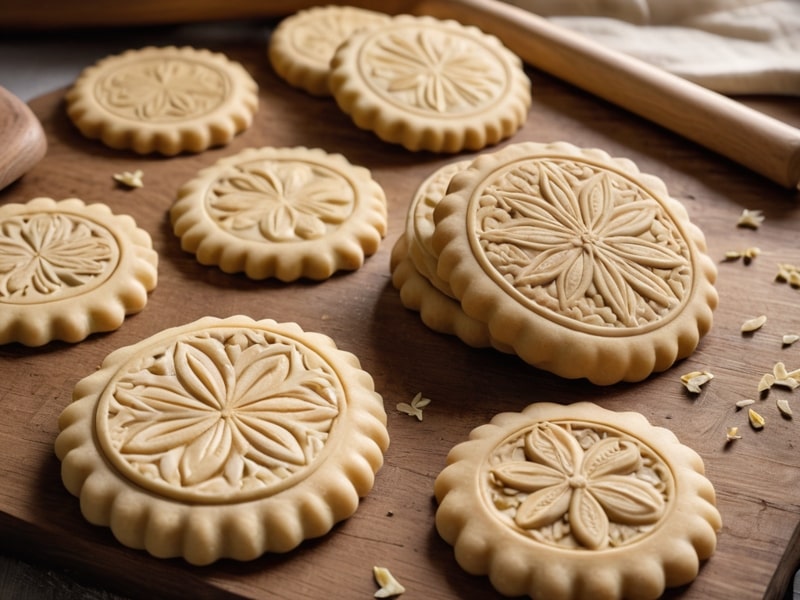
German Springerle Cookies Recipe
Equipment
- Electric Mixer – For beating eggs and sugar.
- Springerle Mold – To create intricate designs on the cookies.
- Parchment Paper – For lining baking sheets.
- Baking Sheet – To bake the cookies evenly.
- Plastic Wrap – For chilling the dough.
- Pastry Cutter or Sharp Knife – For cutting around cookie designs.
Ingredients
- 4 large eggs (room temperature)
- 2 cups powdered sugar
- 1/4 teaspoon salt
- 1/2 teaspoon baking powder
- 1 tablespoon anise extract or anise oil (for traditional flavor)
- 4 cups all-purpose flour
- Anise seeds (optional, for sprinkling on the baking sheet)
Instructions
Prepare the Dough
- In a large bowl, beat the eggs with an electric mixer until thick and pale. Gradually add powdered sugar, salt, and baking powder, continuing to beat until well combined.
- Stir in the anise extract or oil. Gradually add flour, mixing until the dough is stiff and no longer sticky.
Chill the Dough
- Wrap the dough in plastic wrap and refrigerate for at least 2 hours or overnight.
Roll and Mold the Dough
- On a lightly floured surface, roll out the dough to about 1/4 inch thickness. Dust the springerle mold with flour and press firmly onto the dough to create an imprint.
- Use a sharp knife or a pastry cutter to cut around the designs and transfer the cookies to a baking sheet lined with parchment paper.
Dry the Cookies
- Allow the cookies to dry at room temperature for 12 to 24 hours. This step helps the designs set and prevents the cookies from spreading during baking.
Bake the Cookies
- Preheat the oven to 300°F (150°C). Bake the cookies for 10 to 15 minutes, or until the bottoms are pale golden. The tops should remain white to retain the intricate design.
Store and Enjoy
- Once cooled, store in an airtight container. Springerle cookies improve in flavor and texture over time, so it's best to let them sit for at least a week before enjoying.
Notes
- For a unique twist, try using other flavors like vanilla, almond, or lemon instead of anise.
- Ensure the cookies are dried thoroughly for best results, and avoid overbaking to keep them from hardening too much.
- Springerle cookies are ideal for gifting due to their durability and beautiful designs.
Tips for Perfect German Springerle Cookies

Creating perfect German Springerle Cookies can be challenging, but these tips will help ensure success:
- Proper Dough Consistency: The dough should be stiff but pliable. If it’s too sticky, add a little more flour. If it’s too dry, add a small amount of beaten egg.
- Drying Time: Don’t skip the drying step! This is what gives Springerle its characteristic crisp top and soft, cake-like interior.
- Even Baking: Bake the cookies on the middle rack and rotate the baking sheet halfway through to ensure even baking.
- Long-Lasting Flavor: Springerle cookies are known for their longevity. Store them in an airtight container, and they will last for several weeks, with the flavors developing over time.
For more German cookie recipes and baking tips, explore our blog for easy and delicious ideas that are perfect for any occasion!
Variations and Customizations
While traditional Springerle are flavored with anise, you can experiment with different flavors and designs to suit your preferences:
- Flavors: Substitute the anise with other flavors like vanilla, almond, or lemon for a unique twist. You can also add finely grated citrus zest to the dough for a fresh, zesty flavor.
- Colors: Although traditional Springerle are white, you can add natural food coloring to the dough for a festive look. Just be sure to use gel or powder coloring to avoid changing the dough’s consistency.
- Designs: Explore different mold designs for various occasions, such as heart-shaped molds for Valentine’s Day or flower designs for springtime.
For a traditional Springerle recipe and more information on these delightful cookies, check out this AllRecipes guide. You’ll find step-by-step instructions and helpful tips to master this classic German treat.
Troubleshooting Common Springerle Baking Issues
Making German Springerle Cookies can be a delicate process, and sometimes things don’t go as planned. Here are some common issues and how to fix them:
- Designs Disappear During Baking: If the designs on your cookies are fading or spreading during baking, it could be due to insufficient drying time or too much leavening agent. Make sure to dry the cookies for at least 12-24 hours before baking and use the exact amount of baking powder specified in the recipe.
- Cookies Are Too Hard: If your Springerle are turning out too hard, it could be due to overbaking or rolling the dough too thin. Ensure that the cookies are not overbaked and that they have a uniform thickness of about 1/4 inch. If they are still hard, store them with a slice of apple in an airtight container for a few days to soften.
- Sticking to the Mold: If the dough sticks to the mold, dust the mold with a small amount of flour before pressing it into the dough. You can also lightly chill the dough before molding to make it easier to handle.
- Uneven Baking: If the cookies are browning unevenly, it may be due to an uneven oven temperature. Use an oven thermometer to ensure accurate temperature settings and rotate the baking sheet halfway through baking.
The Joy of Springerle Molds
Part of the joy of making Springerle cookies is working with the beautiful molds. Each mold tells a story, capturing the artistry and heritage of German craftsmanship. Collecting different molds can become a hobby in itself, allowing you to create a variety of cookies for different celebrations.
Whether you’re an experienced baker or a beginner, the process of creating Springerle cookies can be a fulfilling experience. The meticulous attention to detail, the tactile pleasure of pressing the molds into the dough, and the anticipation as they bake and set—all contribute to the timeless charm of these cookies.
Serving Suggestions and Pairings
German Springerle Cookies are traditionally enjoyed during the holiday season, but they make a delightful treat year-round. Here are some serving suggestions:
- With Coffee or Tea: The light, aromatic flavor of Springerle pairs wonderfully with a cup of coffee or tea. Enjoy them as an afternoon snack or a sweet ending to a meal.
- With Desserts: Serve Springerle alongside other traditional German desserts like Stollen, Lebkuchen, or Pfeffernüsse for a festive holiday spread.
- As Gifts: Packaged in a decorative tin or box, German Springerle Cookies make a thoughtful and beautiful gift. Their intricate designs and unique flavors are sure to impress.
Creating German Springerle Cookies is more than just baking; it’s about preserving a culinary tradition that has been passed down through generations. Whether you’re enjoying them with family or gifting them to friends, these beautiful cookies are sure to bring joy and a touch of elegance to any occasion.

